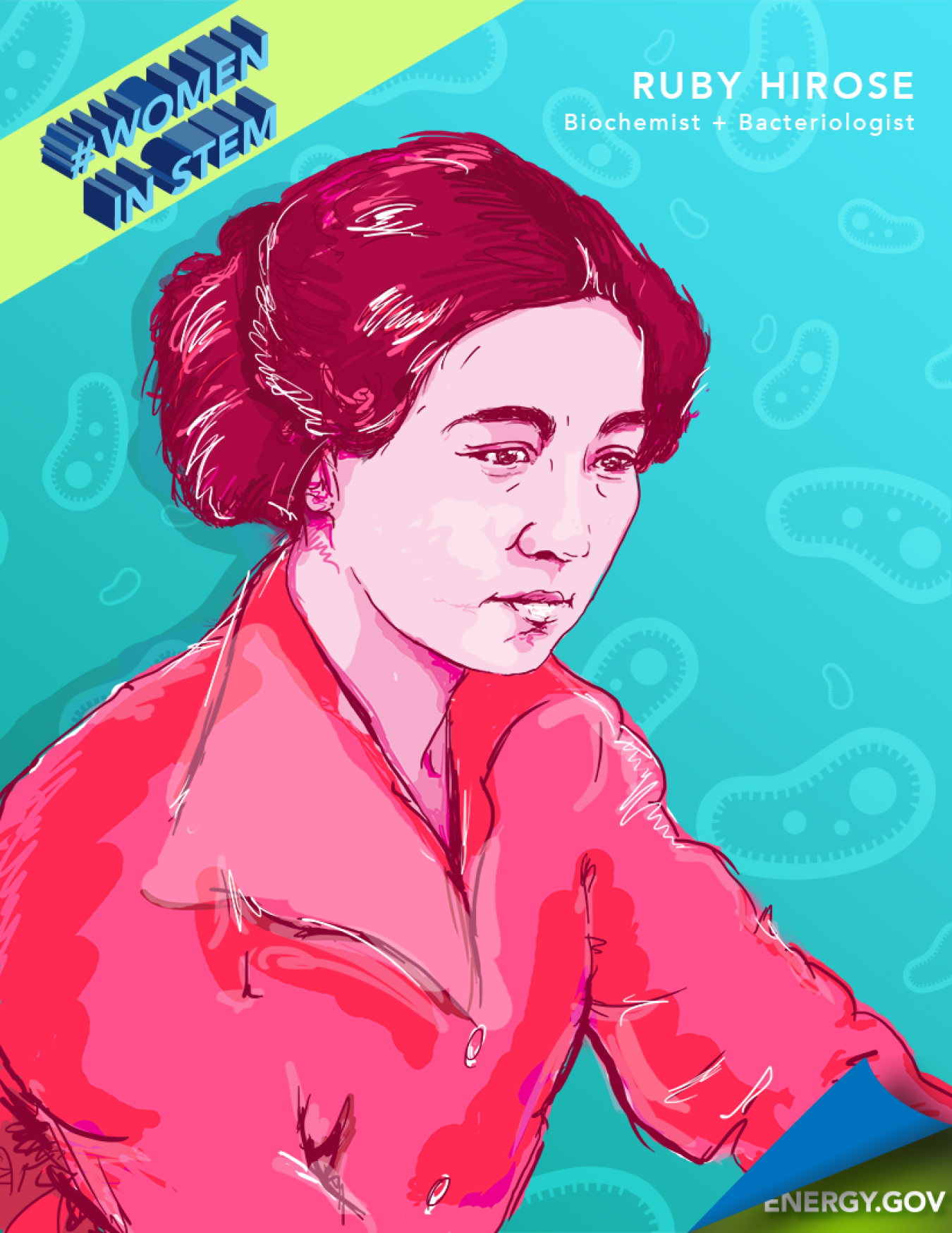
Dr. Ruby Hirose was a Japanese-American researcher whose research helped lead to vaccines against polio and other diseases. Graphic by <a href="/node/2349957">Cort Kreer</a>.
It’s Women’s History Month on Energy.gov. During the month of March, we’re highlighting the great contributions to science, technology, engineering and mathematics or STEM fields made by women throughout history, as well as taking a look at fascinating work that women are doing in STEM fields today.
Dr. Ruby Hirose (1904-1960) was a Japanese American biochemist and biologist. She was born in 1904, shortly after her parents relocated from Japan to the White River Valley near Seattle, Washington. Her studies led her from her home state to Cincinnati, Ohio, where she researched vaccines, blood clotting, allergies and other advances -- continuing her distinguished career through a dark period in our nation’s history for those of Japanese descent.
Here are some facts about Ruby Hirose you probably didn’t know!
Hirose was the first second-generation Japanese-American to graduate from her high school. As a child of immigrants from Japan raised in a predominantly white community, Hirose struggled with issues of racial identity and discrimination. She graduated from Auburn High School in Auburn, Washington, in 1922 before going on to earn her bachelor’s and master’s degrees in pharmacology from the University of Washington. She moved to the University of Cincinnati and completed her doctorate in 1932.
Her research helped lead to vaccines against polio and other diseases. In 1940, Hirose was one of just 10 women recognized at the American Chemical Society meeting in Cincinnati, Ohio. In a male-dominated field, she went on to make major contributions to the development of vaccines, including against infantile paralysis.
She suffered from hay fever -- while working on new ways to treat it. Hirose made strides in improving treatments that used pollen extracts to “desensitize” allergy sufferers while working at the William S. Merrell Laboratories. The idea to treat the pollen with alum to make it more effective actually came from her efforts to develop a diphtheria vaccine.
Her family was sent to internment camps during World War II. In February 1942, two months after the attack on Pearl Harbor, President Roosevelt ordered the relocation of people of Japanese ancestry living along the West Coast -- including Hirose’s father, brother and sister. Hirose had moved east and was living in Ohio by that time, sparing her from a similar fate.
She published a scientific paper on a plant collected by Lewis and Clark. While at the University of Washington, Hirose studied the medicinal properties of Hydrastis canadensis, commonly known as goldenseal. Meriwether Lewis wrote about the plant on his famous expedition, describing its use as a “sovereign remedy” for eye inflammation. Her study, “A Pharmaceutical Study of Hydrastis Canadensis,” was published in the Journal of the American Pharmaceutical Association in 1930.